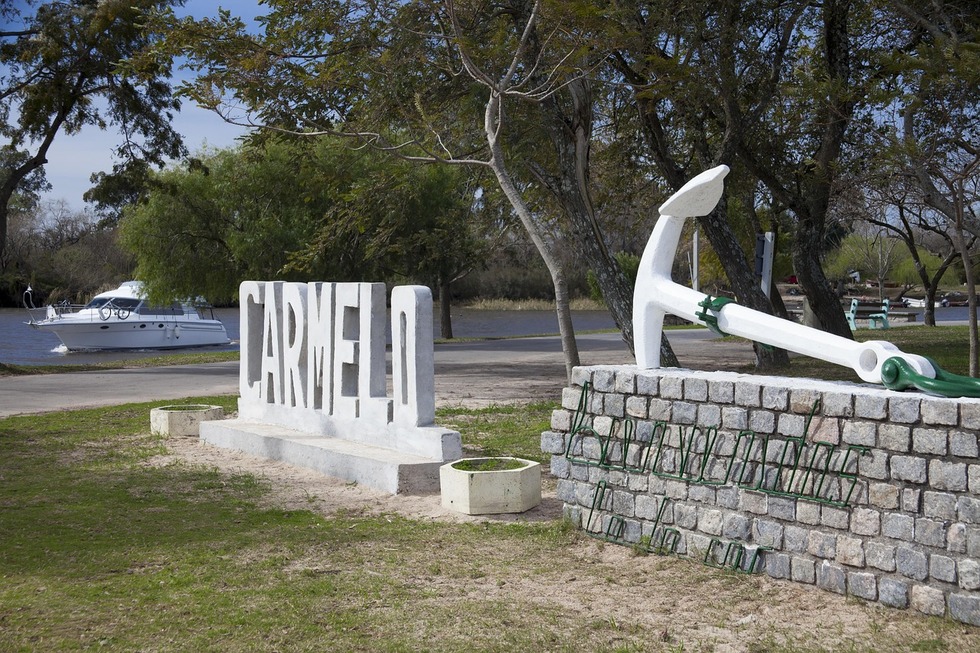Retiring in Uruguay: costs, healthcare, and benefits for expats from the US

Uruguay has quietly become one of South America’s most appealing havens for retirees, where calm streets, friendly locals, and a relaxed pace of life create an easy rhythm of living. Many Americans who retire in Uruguay discover a strong sense of community and excellent healthcare that rivals much larger countries. With charming coastal towns, affordable daily expenses, and welcoming retirement communities, it’s a place where life feels both comfortable and secure.
This article is brought to you by Taxes for Expats – an award-winning team that helps Americans abroad manage US tax filing with confidence. As your dream of life in Uruguay grows, we’ll help you plan smartly so the cost of retirement abroad supports the lifestyle you’ve earned.
Why Uruguay is a smart retirement choice
Retiring in Uruguay offers a rare mix of safety, affordability, and strong community ties – three reasons it’s become a top choice for Americans.
- Uruguay has a strong English-speaking network and a culture known for tolerance, making integration seamless. From Montevideo’s coastal boardwalks to Punta del Este’s relaxed elegance, expats find social clubs, volunteering groups, and expat meetups that turn newcomers into locals fast.
- Once you receive your cédula (National identity card), opening a local bank account is straightforward. Most institutions only ask for basic documents, allowing retirees to manage pensions or savings in local or foreign currency with reliable digital banking access.
- You’ll keep receiving your Social Security payments without interruption, and the US–Uruguay Totalization Agreement ensures your work history counts properly toward retirement benefits. This provides financial continuity and peace of mind abroad.
- Uruguay stands out as one of Latin America’s most stable democracies, ranking among the top three safest nations in the region. Its low corruption and high civic trust make daily life predictable and secure – a major comfort for retirees looking for peace of mind.
- Residency rules favor simplicity. There’s no fixed income minimum, only proof of stable monthly income, such as a pension or annuity, and basic health and background checks. This flexibility welcomes retirees of varying financial profiles.
Cost of living in Uruguay for US retirees
With its calm rhythm, clean cities, and emphasis on community, Uruguay combines affordability with comfort in a way few destinations can. Everyday expenses – whether rent in Montevideo, groceries from local markets, or a weekend meal along the Rambla – tend to stay well below comparable US costs. For Americans who retire in Uruguay, the balance of value and quality makes daily life both sustainable and satisfying.
| Categories | Items | Amount (USD) |
|---|---|---|
| Housing | Apartment 1 bedroom in the city center; Apartment 1 bedroom outside the center | $629.98; $499.93 |
| Utilities and transportation | Utilities for 85 m² apartment monthly; Monthly transport pass; One-way local ticket; Internet 60 Mbps (unlimited) | $177.87; $63.87; $1.43; $49.05 |
| Food, dining, and entertainment | Meal at an inexpensive restaurant; Meal for two, mid-range; Cappuccino; Cinema ticket | $16.77; $55.10; $4.39; $11.02 |
(Cost of living data sourced from Numbeo)
When it comes to housing, most newcomers find that renting makes more sense during their first year. It offers flexibility while you explore neighborhoods and understand the market before making a long-term investment. According to Numbeo, the average city-center purchase price in Montevideo is around $3,240 per square meter, so it’s worth weighing rent prices carefully before buying.
For context, here’s how average monthly living costs (excluding rent) compare with other popular Latin American retirement destinations:
| Country | Average monthly expenses (USD) |
|---|---|
| Uruguay (Montevideo) | $976.60 |
| Ecuador (Cuenca) | $511.90 |
| Costa Rica (San José) | $932.40 |
| Mexico (Mexico City) | $772.60 |
| Colombia (Medellín) | $587.60 |
These figures reveal that while Uruguay may not have the lowest cost of living, its balanced prices, low inflation, and accessible healthcare system make it one of the most sustainable destinations for retirees seeking value and comfort abroad.

Healthcare and insurance in Uruguay
Alongside cost of living, healthcare quality is another factor retirees weigh carefully – and Uruguay performs strongly here. Uruguay's healthcare system blends a national public network with established private hospitals, and the state publishes comparable indicators and prices. The public network is run by ASSE, offering free or minimal–cost services at government hospitals and clinics. Wait times can be long for nonurgent care. Many expats instead choose a mutualista – a private hospital membership (Asociación Española, CASMU, Médica Uruguaya, British Hospital) – which gives faster access, more comfort, and more consistent service.
As a cost example, Asociación Española lists a Cuota Social Adulto of 3,621 UYU as of July 1, 2025. Médica Uruguaya shows co-pays of about 160 UYU for lab tests and 407 UYU for medicines, while CASMU posts similar 2025 prices. Retirees with a local pension may get mutualista coverage through FONASA, and those with foreign pensions usually join as private members. Many expats combine a local mutualista with an international healthcare policy, since Medicare has limited coverage outside the US and only some Medigap plans include emergency care abroad.
Residency and visa steps for US retirees
Do you know that Uruguay does not issue a special retirement visa? Instead, retirees apply for permanent legal residency by proving a stable pension or annuity income, which some refer to as the Uruguay retirement visa.
What is this route to retirement, you may ask? Officially, it is a standard residency based on financial self-sufficiency, and to secure your residency, you’ll need a few key documents and health checks.
- Valid passport and one photo carnet (passport-style photo).
- Police certificates from the United States and every country lived in during the last five years, each apostilled and translated where required. Applicants born in the United States can complete fingerprinting at Interpol Montevideo to obtain their FBI certificate.
- Uruguayan vaccination certificate issued under Decree 136 of 2018 after validating your foreign vaccine record at a local clinic.
- Carné de salud from an MSP-authorized provider. This standard medical check confirms ID, vaccination status (such as tetanus), and basic health indicators.
- Proof of retirement income, shown through a notarized certificate confirming the monthly income amount and how funds will be received in Uruguay.
- Civil status documents, such as marriage or birth certificates, all with apostilles and official translations if needed.
- Government filing fees are listed in Unidades Indexadas (UI) for the online application and supporting documents.
How do you apply for residency?
Visa requirements for US passport holders are simple and allow you to begin the process from inside Uruguay. Here is how to make your application for retiring in Uruguay more straightforward and organized.
Step 1: Enter Uruguay using a US passport for a stay of up to 90 days, which can usually be extended once.
Step 2: Create an account on gub.uy, start your Residencia Legal Permanente application online, and pay the fee in UI.
Step 3: Collect police certificates for the past five years and arrange apostilles and sworn translations as required. US-born applicants can complete fingerprinting at Interpol Montevideo for their FBI certificate.
Step 4: Validate your vaccine records and get the Uruguayan vaccination certificate under Decree 136 of 2018.
Step 5: Schedule a carné de salud appointment at an MSP-authorized clinic, bringing ID and any recent test results.
Step 6: Prepare a notarized income certificate showing your retiree or rentista status, the monthly amount, and proof of income transfer to Uruguay.
Step 7: Upload all documents in PDF format to your online file and wait for an email invitation to your DNM audience (interview).
Step 8: Attend your DNM interview with all original documents, submit your photo carnet, and complete biometric data collection.
Step 9: Once approved, use your residency resolution to obtain a cédula de identidad from the civil identification office.
NOTE! The Dirección Nacional de Migración (DNM) lists retirement income from abroad as an acceptable basis for residency. There is no fixed dollar minimum – income just needs to be consistent and sufficient to support yourself. All official fees are displayed in Unidades Indexadas (UI) on the migration portal, including application and ID certificate costs.

Best cities for retirement in Uruguay
After obtaining residency, the next step is choosing where to make your home. Each Uruguayan city has its own pace and personality – from the cultural pulse of Montevideo to the seaside calm of Punta del Este and the colonial charm of Colonia del Sacramento. These destinations differ in size, healthcare access, safety, and living costs, giving retirees the freedom to match their lifestyle to the setting that feels most like home.
Montevideo
Home to 1,302,954 residents in the 2023 census, Montevideo concentrates the nation’s services and the largest expat scene. English-friendly private care is anchored by British Hospital and major mutualistas such as CASMU, both widely used by foreigners.
Police data show national homicides edged down 1.6% in the first half of 2025; in the capital, safety varies by neighborhood, with coastal districts popular for their amenities and patrol presence. A realistic single-retiree budget runs about $1,600–2,400 per month, based on Numbeo’s basket plus typical one-bedroom rents and utilities.
Punta del Este
This resort city counted 18,193 permanent residents in 2023, swelling dramatically in summer with regional tourism. Healthcare is strong for its size through Sanatorio Cantegril and private clinics, with English encountered more often in private settings. Crime is generally lower than in inner-city Montevideo, though standard coastal precautions apply, especially in peak season. Expect a premium over the capital, with many retirees budgeting roughly $1,900–2,800 per month, given higher coastal rents and seasonality.
Colonia del Sacramento
Colonia’s UNESCO-listed gem has 32,159 residents as of 2023 and a calm, walkable core facing the Río de la Plata. Medical access includes the ASSE Hospital Departamental de Colonia and private options that serve locals and newcomers.
Its smaller scale and steady tourism translate to a comfortable day-to-day with modest crime by big-city standards. A focused retiree budget of about $1,300–2,000 per month fits many lifestyles here.
Smaller towns for quiet living
Prefer compact settings with lower costs and easy rhythms that feel like informal retirement communities? Look at these towns with basic healthcare access nearby and budgets often in the $1,200–1,800 range, depending on rent and season.
- Atlántida: population 8,139 city proper, 13,632 including adjacent localities; Costa de Oro beach town within commuting reach of Montevideo.
- Piriápolis: population 12,150; classic seaside promenade under Maldonado’s care network and within reach of Cantegril and Mautone.
- La Paloma: population 5,939; relaxed Atlantic vibe with services in Rocha and seasonal calm outside summer peaks.
NOTE! Many neighborhoods in Montevideo and Punta del Este function like compact retirement communities, with clinics, pharmacies, and groceries within a short walk.
How taxes work for retirees in Uruguay
Taxes are the final piece that completes Uruguay’s retirement picture – and its rules are surprisingly friendly for expats. Uruguay uses a territorial tax system with defined tests for tax residency. Here is a brief map of what Uruguay taxes locally, how US rules still apply, and which tools reduce double tax exposure.
- Residents are taxed primarily on Uruguayan source income, while capital income, like foreign dividends and interest, is taxable for residents as an exception in the law. DGI materials and Title 7 confirm the framework and rates used for capital income.
- IASS is the social security tax that applies to Uruguayan pensions; it does not apply to pensions paid from abroad, which are generally outside Uruguay’s income tax scope.
- Individuals who become tax residents can elect a full exemption on foreign capital income for the year of arrival plus ten years or choose a 7 percent flat IRPF on that income with no time limit. This regime is set by Law 19.904 and DGI guidance.
- The IRS treaty list does not include Uruguay, so there is no bilateral income tax treaty. Use the Foreign Tax Credit on your US return to relieve any Uruguayan tax on the same income.
- The United States and Uruguay have had a Social Security totalization agreement in force since 1 November 2018, which helps avoid dual social security contributions and coordinates benefit credits.
NOTE! US citizens still file US returns. Combine the Foreign Tax Credit with Uruguay’s territorial rules and the totalization agreement to minimize overlap and document residency with a DGI tax residence certificate when needed. Many Americans who retire in Uruguay use this trio to keep taxes predictable.
Tips for a smooth transition
You’ve gotten your residency, mapped out your budget, even gotten healthcare and taxes settled, all that is left is settling into retirement life, and actually, it is far easier than you imagined, especially when you prepare ahead and connect with the local community. Following these few tips can make the move more comfortable and rewarding as you retire in Uruguay.
-
Pick up everyday Spanish
Mastering basic Spanish phrases helps with banking, healthcare, and daily errands. Even modest language skills make it easier to navigate public offices and build friendly ties with neighbors. -
Join expat and local networks
Community groups in Montevideo, Punta del Este, and Colonia welcome newcomers and share practical advice on housing, healthcare, and taxes. They’re a great way to exchange experiences and meet both locals and other retirees. -
Organize finances early
Build a clear budget that covers housing, insurance, and expected taxes. Consult professionals about how income, savings, and pensions will be handled under both Uruguayan and US systems before transferring funds.
Get expert tax guidance for your retirement in Uruguay
Relocating overseas involves more than a lifestyle shift; it also requires staying in step with both Uruguay’s tax regulations and the IRS framework. From reporting overseas pensions to selecting the proper residency classification, overlooking a single formality can cause costly complications.
At Taxes for Expats, our professionals manage the intricate details so you can retire in Uruguay with peace of mind and enjoy your new surroundings without concern.




